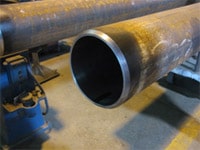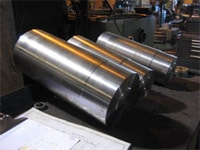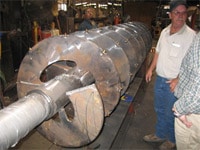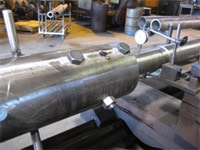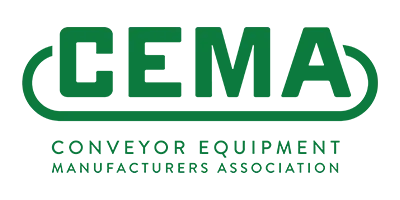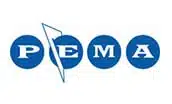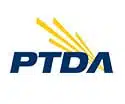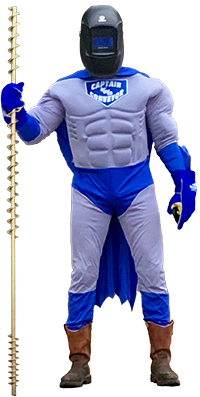Large Diameter Pipe
PDF BrochureThe purpose of building screws on large diameter pipe is be able to span long distances without the need for an internal hanger bearing. CEMA standard screws do not exceed 12-feet in length. KWS regularly builds screw conveyors with screws up to 40-feet in length. The screws must be mounted on oversized pipe in order to prevent excessive screw deflection.
The method of manufacturing screws is very important to the proper operation and life of screw conveyors. Minimal screw deflection and shaft run-out are the keys to successful long-term operation of screw conveyors. KWS is the only screw conveyor manufacturer in North America with the abilities to properly manufacture screw conveyors built on oversize pipe.
The proper procedure for building a screw on oversized pipe begins with machining the bore of the pipe. The bore of the pipe must be true to the centerline and outside diameter in order to maintain concentricity. The pipe section is inserted in a lathe and the bore of the pipe “skimmed” to remove a small amount of material. Figure 1 shows the finished pipe and the “skimmed” bore. The pipe shown in Figure 1 is 8-inch schedule 80 mild steel pipe.
Internal bushings are machined for a press fit into the pipe. Figure 2 shows finished bushings that are waiting to be press fit into a pipe.
The bushings must then be welded to the pipe after press fitting. The plug welds join the bushings to the pipe. The bushings are now concentric to the outside diameter and centerline of the pipe.
The flights of the screw are now mounted and welded on the pipe. Figure 3 shows a 30-inch diameter ribbon screw mounted on 8-inch schedule 120 mild steel pipe.
The screws must return to the machine shop for straightening after welding on the flights. The heat from the welding process causes distortion of the pipe and the screw must be straightened. KWS puts each screw section in a lathe to check and correct the straightness. Dial indicators are used to measure the run-out in the bearing area of the shaft. KWS allows a maximum run-out of 0.015-inches T.I.R. at the bearing area on screws.
Figure 4 shows a screw being checked and straightened in a lathe.
Once the screw is straightened to within 0.015-inches T.I.R. it is sent to our assembly and testing department to be assembled into a complete screw conveyor.

